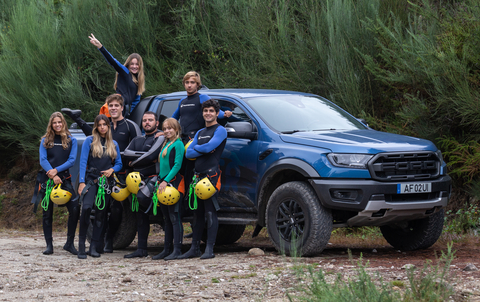Whitewater rafting: Catch a wave on scenic rivers

Jeff Bennett looks at a river the way Jeff Gordon looks at a racetrack.
He dissects hairpin turns, current flow, riffling chutes, the camber of water over rounded granite. He looks for grooves, eddies, swirling vortexes, swift apexes, gradient and take-out points. The more speed and difficulty, the better.
"I've always been an adrenalin addict," said Jeff Bennett, author of The Complete Whitewater Rafter and its companion book The Essential Whitewater Kayaker: A Complete Course. "It's just you, your skills and what is in front of you."
Bennett grew up paddling canoes in the Pine Barrens of New Jersey. A family vacation to Jackson Hole, Wyo., changed the flow of his life in the late 1970s when he encountered the Snake River.
From headwaters in Wyoming and Montana, the Snake River flows 1,000 miles to the Columbia River. Its circuitous path offers some of the most challenging and scenic rafting adventures in the U.S.
Bennett attended college at Auburn University, Ala., where his extracurricular studies focused on river excursions in the Southeastern U.S. His formal coursework flowed down a divergent stream—one carrying him along calm waters as a freshwater biologist and the other into the challenging rapids of pre-law.
His innate desire for competition won the day, and in 1982 he enrolled in law school at Lewis & Clark College in Portland, Ore. The name suited a river man like Bennett. More importantly, the campus just happened to be a short drive from some of the most well-known whitewater rivers.
The Columbia River gorge provided a fertile training ground and endless opportunities for thrill-seeking. By his own admission, Bennett spent the first two years after law school as a whitewater bum.
"I pretty much lived out of my truck," Bennett said. "I had everything I needed in that truck: A kayak, all my paddling gear, and a sleeping bag. If I needed a real roof, I just moved from one friend's couch to another."
For the next 16 years Bennett and later his wife, Tonya, explored rivers throughout the Western hemisphere. His travels took him as far north as Canada and as far south as Costa Rica.
Bennett gained an explorer's intimacy with rivers along the west coast and compiled his knowledge in three guidebooks.
"Whitewater started as a passion, but quickly grew into an addiction," Bennett said. "I had to be on the water because, as crazy as it sounds, it was the only place I felt grounded."
His passion turned to profit during a decade as a tour guide. For two of those years he worked in California, leading excursions on Northern and Central California.
"If you're looking the biggest whitewater buffet, look to run rivers in springtime when snowmelt is at its peak,' said Jeff Bennett. "As spring turns to summer, your options may narrow, but there's still lots left on the menu: glacial-fed or dam-controlled rivers can be found in many parts of the western states."
Although he turned his hobby into an extreme sport, Bennett encourages people of all ages and skill levels to try whitewater rafting.
"The beauty of whitewater is that there's a river out there for everyone," Bennett said.
Bennett offered the following advice for people looking to get their feet wet with whitewater rafting:
- Choose the right river. A river's difficulty is measured from Class I to VI, with Class I being the easiest and Class VI being the hardest. Novice rafters can find a world of adventure on Class II-III rivers. More experience experienced rafters may want to tackle Class IV-V rivers. "Leave the Class VI rivers to the sports' extremists," Bennett cautioned.
- Go with an experienced commercial guide. They know the ins and outs of the river, have all of the necessary safety skills, and can take all of the pressure off a first timer.
- Make reservations well in advance so that you're guaranteed a seat on your desired travel date.
- Do your research. River flows reach their highest and most dangerous levels in the spring. If you are interested in a particular river, ask local experts for information on water levels and the best times to go.
- Bring the right gear. Cotton clothing loses its ability to keep you warm and is not recommended for rafting. Neoprene, nylon, polypropylene, and other synthetics work well in the wet environments. Also, bring shoes or sandals with rubber soles. Your outfitter may supply you with lifejackets, helmets, and other safety gear but not sunscreen and sunglasses.
- Use disposable waterproof cameras if you want to capture memories for posterity. Rafting adventures can take you through some of the most desolate and beautiful parts of America.
Article by Jay Alling, editor of Sensible Driver. Write to jay@sensibledriver.com.